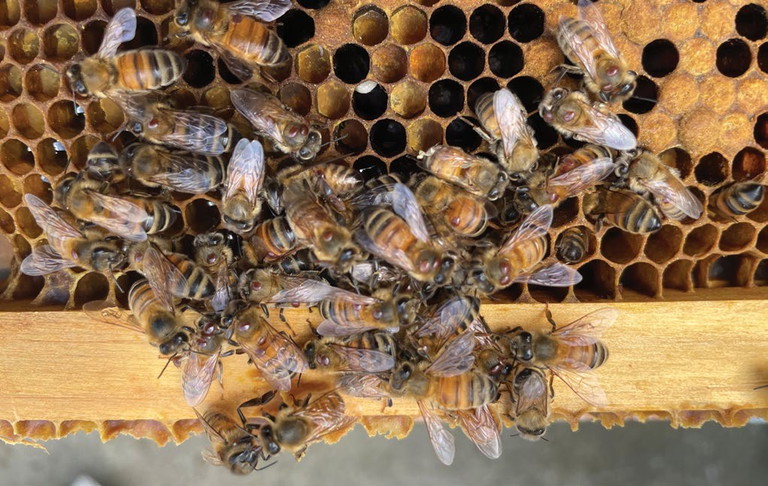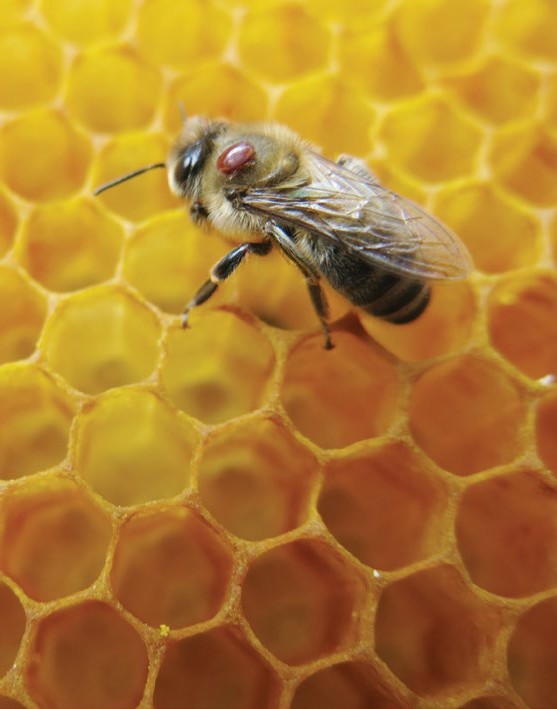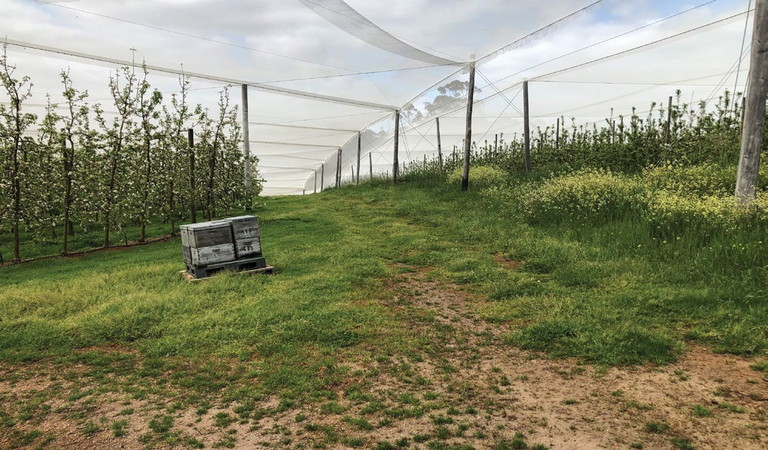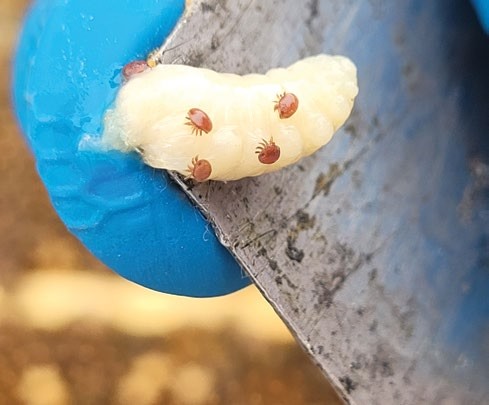UPFRONT discuss
Protecting pollination
Western Australia’s defence against
VARROA MITE

Bees covered with mites and deformed wings.
Western Australia’s healthy bees and pristine forests yield some of the purest and most sought-after honey on earth. We currently hold the enviable status of being one of the last places on earth free from Varroa mite and the use of pesticides in honey production.
Words Department of Primary Industries and Regional Development
VARROA mite is the most serious threat to our healthy bee populations, honey production and the crops that rely on bees for pollination. In June 2022, it was detected in New South Wales (NSW) with an emergency response initiated under the Emergency Plant Pest Response Deed (EPPRD).
The cost of the response is shared by the Commonwealth, state and territory governments, and affected agricultural industries that have signed the EPPRD. The NSW Department of Primary Industries led the response and although it was the largest agricultural biosecurity response in Australia to date, it was unsuccessful in eradicating Varroa mite.

Honeybee with varroa mite sitting on honeycombs.
In September 2023, the National Management Group agreed it was no longer feasible to eradicate Varroa mite from Australia and the response should transition to management (T2M).
In February 2024, the National Management Group approved a 24-month T2M plan.
This plan provides an orderly transition from a program focussed on eradication to management outside of the EPPRD, minimising the ongoing effects of Varroa mite naturalisation on the European honey bee industry and pollination-reliant industries with a focus on business continuity.


Varroa infested drone larvae.
The impacts of Varroa mite on pollination
Honey bees, managed or feral, are the most effective pollinators of commercial crops due to their physical adaptations, high foraging activity, large colony sizes and specialised pollination techniques.
The introduction of Varroa mite to North America, Europe and New Zealand caused a decline in numbers of feral honey bee managed colonies. In some areas, 95–100 per cent of feral honey bee hives died within three to four years of infestation.
Varroa mite was first discovered on New Zealand’s North Island in 2000 and on the South Island in 2006. Almost all feral colonies of bees in New Zealand have disappeared ending free crop pollination services. Growers rely more on commercial pollination services and costs of these has steadily increased as up to a third of beekeepers have gone out of business.
The situation in Western Australia
Western Australia’s geographical isolation and robust biosecurity system, including border quarantine checkpoints and strict quarantine requirements helps maintain WA as Varroa mite free. To keep it this way, everyone must comply with WA quarantine requirements for honey bees and honey bee-related items and equipment. Check the requirements or contact Quarantine WA on (08) 9334 1800 if you are considering importing any of these items into WA.
In WA, Varroa management activities aim to help beekeepers maintain healthy hives and monitor for Varroa mites, making every hive a sentinel hive. The T2M program is funding five specialist Varroa mite development officers and four specialist trainers to provide commercial and recreational beekeepers with information and practical assistance to protect and maintain healthy beehives. To contact Varroa mite development officers email T2M.varroa.mite@dpird. wa.gov.au
The first training sessions will be in the Perth metropolitan area in November 2024. Future training sessions are planned for Bunbury, Albany, Margaret River, Manjimup, Geraldton and Esperance.